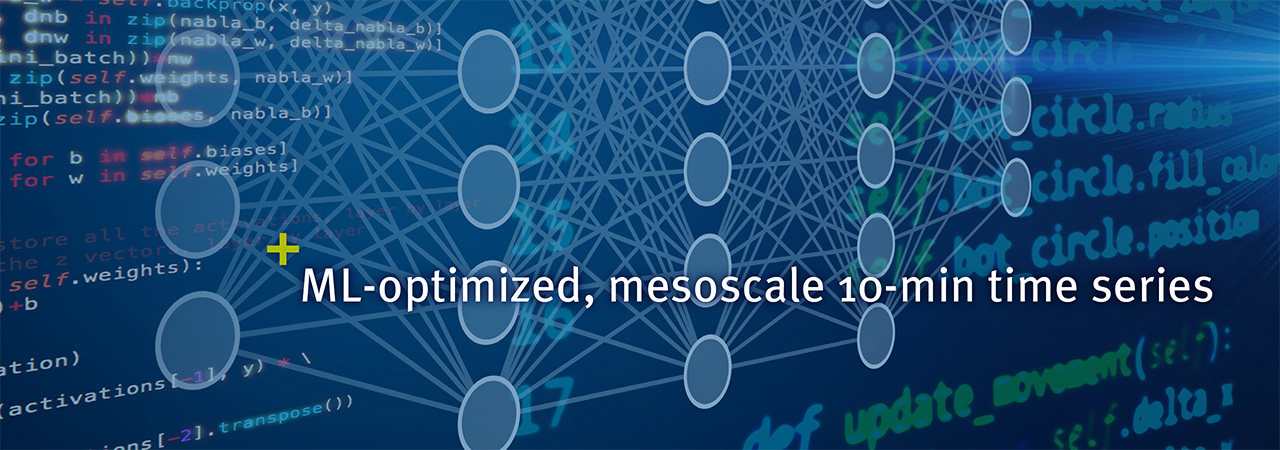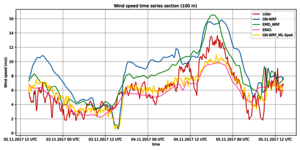
10-min time series
Mesoscale 10-min time series with ML-based optimization and spectral method
GEO-NET offers the GN-WRF_ML-Spek time series throughout Germany - high-resolution site-specific wind time series with 10-minute temporal resolution.
These time series are used in particular to determine extreme winds as part of stability analyses. They also offer a wide range of possible applications.
What makes our time series special
Our 10-minute time series are calculated using the established WRF model (Weather Research and Forecasting) - one of the world's leading weather models in the wind energy industry. A multi-stage optimization process then ensures impressive data quality:
- Systematic corrections depending on location and height
- Adjustments for diurnal and seasonal variations
- Spectral correction for realistic representation of high-frequency fluctuations
This process combines machine learning with spectral-statistical methods.
Validation
The generated time series were comprehensively validated by GEO-NET. Wind speeds and wind directions at heights of 100 m and 150 m were compared with at least one year of measurement data from up to 37 locations. The results confirm the high quality of the time series:
100 m height:
150 m height:
We would be happy to create a specific time series for your desired location.
Advantages of GN-WRF_ML-Spek
- 10-minute resolution of wind speed and direction
- almost up to date - wind time series with only two weeks delay to the current date
- high correlation and low error
- realistic representation of temporal variability
Typical Applications
- Yield estimation without measurements: Basis for time series–based energy yield calculations in the absence of site measurement.
- Structural safety verification: Data basis for extreme wind assessment based on 10-minute time series.
- Long-term correction: Data source for the long-term correction of reference data.
- Hybrid power plants: Combined analysis of wind and PV generation to optimize power production.
- Grid and self-consumption optimization: Comparison of load profiles and production to calculate degrees of autonomy.
Do you have any questions?
Feel free to contact us or give us a call right away!
wind@geo-net.de
Tel: +49 (0)511 3887200
We are happy to help you!



